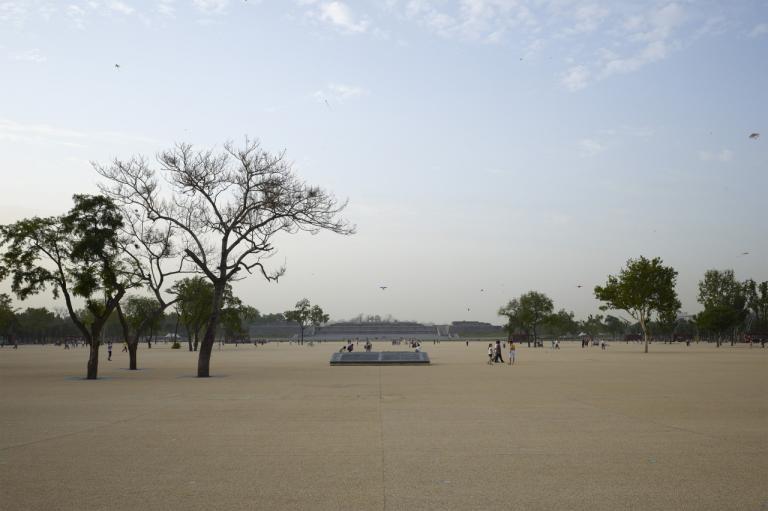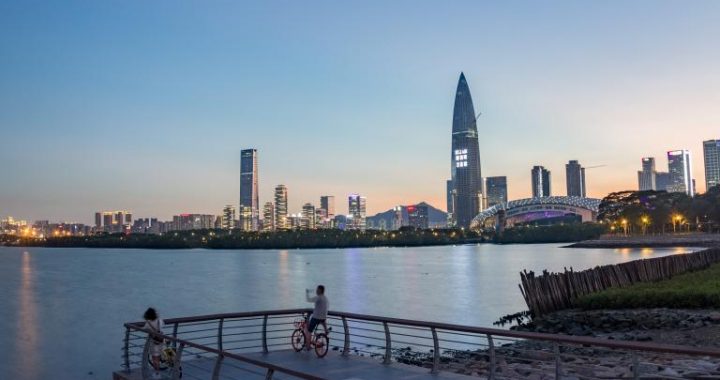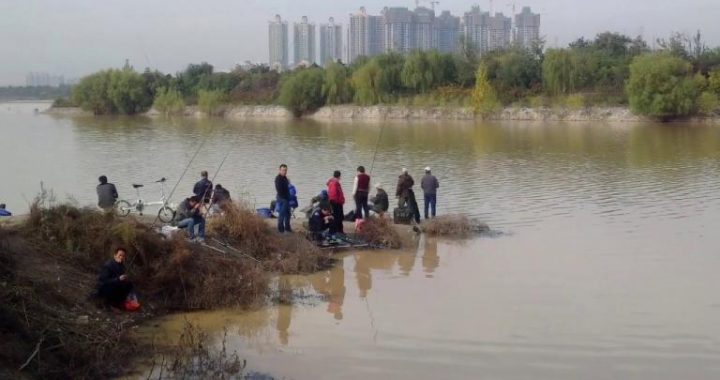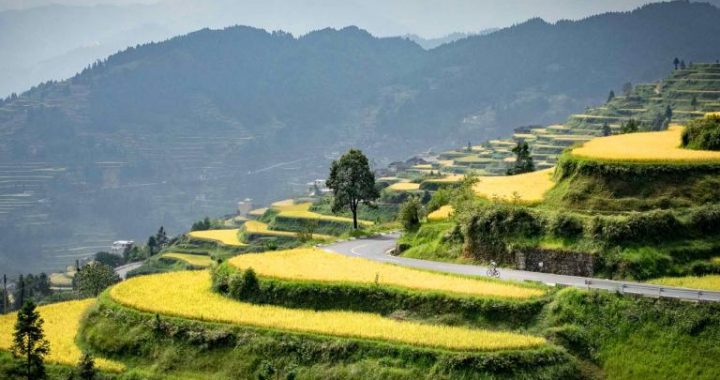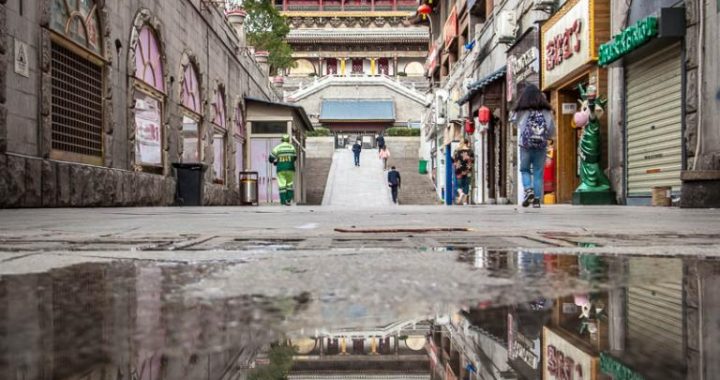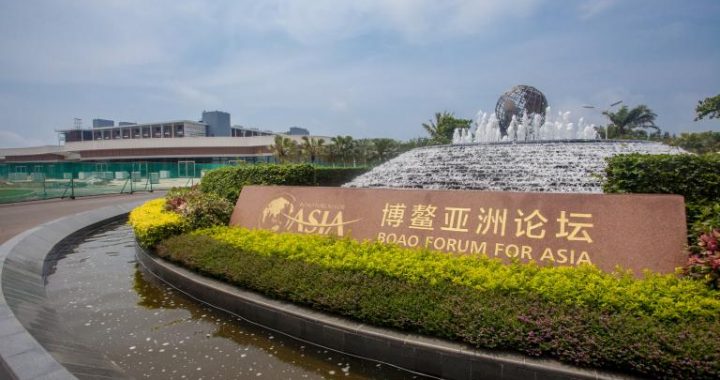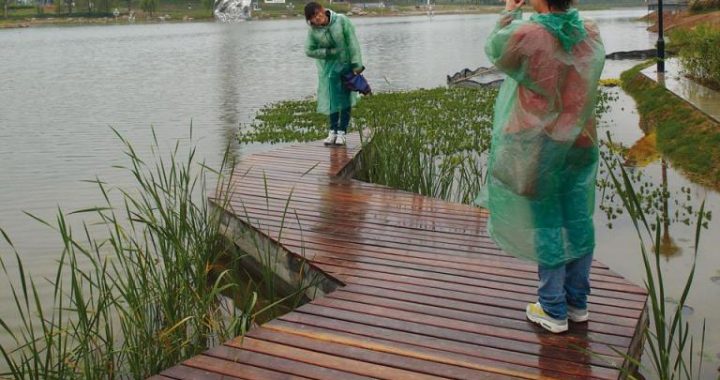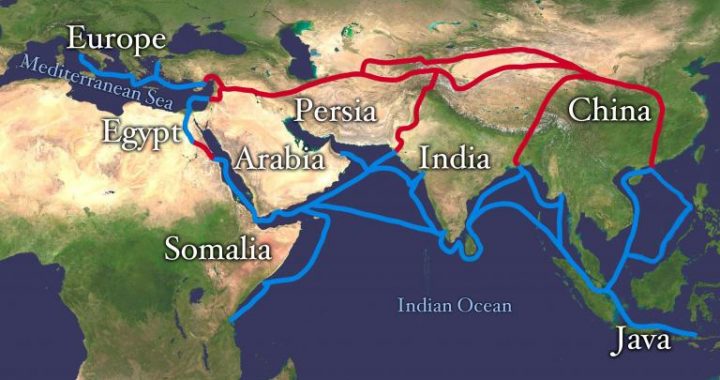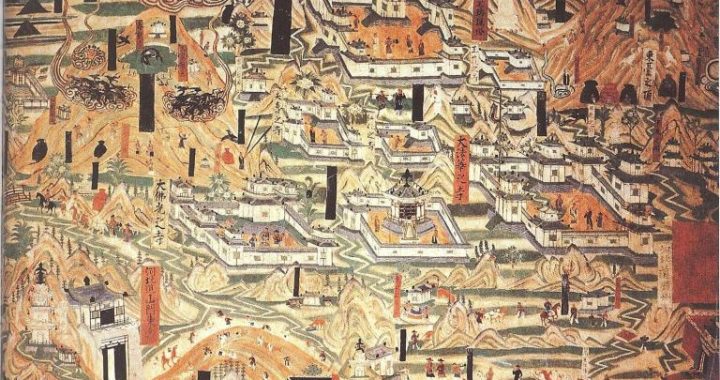Hometown of the Banpo Clan
9 min readBanpo site is an archaeological site located in het northern Banpo Village on the east bank of the Chanhe River, just east of Xi’ an, Shaanxi Province. Banpo is the type of site associated with Yangshao Culture whichwas located in the Yellow River Valleyand dated to 6000 to 7000 years ago All these present us with an outlook of the aboriginal village and the hard situations of the forefathers in pursuing civilization, and reflecting upon the production level and the social structure at that period in time. The Banpo site is of great importance in the study of the Neolithic Age.
Originating in the Gansu Province, the Weihe River rolls its way eastward, tranversing the middle regions of the Shaanxi Province, and empties itself into the Yellow River. Many tributaries flow through the region, endowing the fertile lands on their banks and making the province an early cradle of Chinese civilizaiton, and hence the name “800-li Qinchuan”. Qinchuan is the exact location of the Banpo site. Standing between the White Deer Plain and the Chanhe River, the Banpo site contains well organized middle Neolithic settlements carbon dated to be between 5000 to 6000 years ald. The Shangzhai culture site, located to the south of the Yan Mountain, to the north of the Ju River, can be described as being surrounded by mountains and bodies of waters. The environment of these two sites exemplifes that man living in those ancient times had many things in common. One possible reason is that, during that era, human were much more depended on Nature, and did not take the initiative to conquer and transform. Banpo Site, first discovered in the 1950s, is a comparatively integrated commune village, rather typical of the Matriarchy clan society, and is regarded as the representative of the Yangshao Culture with its various cultural relics. The site is now home to the Xi’ an Banpo Museum, built in 1957 to preserve the archaeological collection. People need to climb dozens of steps before entering the museum. The steps are just like a time tunnel, leading us from one step to another giving us a glimpse of the living conditions of our ancestors.
The place the Banpo people resided is called the Banpo Village now.Square or round, the houses were mainly a half-crypt with overhanging thatched roofs. Most of the houses were malls in size, with only one big house built in the center of the site. The layout of the site is so that the small house were constructed encircling the big one, which had a meaning associted with it, apparently reflecting the clan spirit of a cohesive group.
The Shangzahi culture site also has the ames kind of houses; however, most of the houses were build along a irregular oval. Buried under each house were one or two deep-belly pots, which perhaps were used for cooking or keeping fre. Since it hasn’t been fully excavated, the existence of the big houses and information about the round format remains unknown.
Located at the Banpo site, many post-poles made from a kind of mixed material consisting of tree branches, steams and leaves of other plants and mud. This kind of post-poles, where timber poles were erected to support the pitched thatched houses, had also been found in the Shangzhai culture site. The seemingly humble “horse-shaped shakes”are actually a brilliantcreation of the ancient Chinese people 6000 years ago, and the precursor to later Chinese architecture that used wood and earth. Living in the ditch-enclosed houses where the humidity was high, people used locally available materials, such as thatches, fur or fire to protect themselves. The houses were furnished with fireplaces, but no chimney for the flmes. Therefore, once there was an accident fire, the houses needed to be reconstructed. We can imagine how hard a life they must have led! The human kind developed slowly, and they must have endured through long-time practices or even had to pay a grave cost of shedding bloods before every step forward was taken.
The primitives tried hard to survive. Chimney flues can now be easily made; however, they could have only manage to build ditch-enclosed houses for a living. The Banpo site has distinct features of a matriarchal society. Living in every small houses were women and visiting men from other clans. They were relatively stable couples, of course, but this mode of marriage was totally different from the later monogamy. There was no permanent partnership, hence the children could only recognize their mothers and were unable to identify their fathers. It was kind of a come-and-go style. The most respected “old grandmother”or other chiefs lived in the large house, which was also a communal residence of the elderly andthe children. In the Banpo Village, people lived a pristine communist life,harmonious and peaceful.
The settlement was enclosed by a rectangular moat,which were 6 to 7 meters in depth and 5 to 8 meters in width.Without modern excavationequipments,the Banpo villagers simply use simple stone spades to digdirt out.The dirt,that was dig out for building the several-hundred-meter moat mounted up to over 10000 cubic meters.The tremendous difficulty involved in completing this project probably equals to that of the descendants digging a great canal.
The Banpo moat served as a pioneering and embryonic form for the later moats for its use.It channeled the summer rain water,while protected the village from both beasts or clans invasion. In the northern part ofthe Banpo Village is the cemetery district, where the clan members were buried. The graves lined up in regular order, with heads pointing west.
The graves exhibited different burial customs. Most of the graves buried a single body, while some buried two or four. Apart from this, there were exhibitions of primary burial, secondary burial, on-back burial, on-face burial, extended burials, flexed burial as well as urn burials. Mostly, adults were buried separately from the children. The children were buried within the village outside the walls of houses. They were placed in special pottery jars that were pierced at the bottom.
All these present us with an outlook of the aboriginal village and the hard situations they faced because of low production level and scarce materials that were big concerns during that prehistoric time. There wereno divisions of classes, rich or poor, and no exploitation and oppression.
Difference did exist, however, to which the sociologists might be able to produce many more scientific and more reasonable explanations.
Banpo villagers depended on hunting, fishing and farming for their existence. From the excavated arrowheads made from either stones or bones, we can deduce that arrows, stone balls and stone spears prevailedand used by them at the time. This further shows us that the human kind created bows and arrows, spears, and built up the muscles in order to have a livelihood. It was only after entering a society based on class that bows and arrows started to be used as weapons in wars that were fought for lands and power. After that, instead of being used for making a living, they were held up and used to end people’s lives. Over several thousand years, thefishing net have all broken down, but not the weighted dangle, which was made by braking two holes on each side of a falt pebble. Casting the fishing net onto the water, the weighted dangle fastened to the net would sink into the depth. Fish, then, would be caught. They were capable of spinning fishing nets with fishing threads and also for their potteries painted fabric decorations, showing that the Banpo people had already been able to spin and weave.
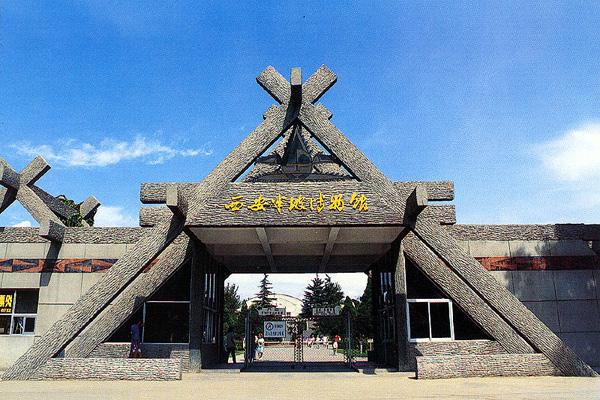
We should refrain from thinking too highly of our ancestors intelligence. In retrospect, they lived at the time in infancy of the human kind, around 5000 to 6000 years ago, and were far from entering the era ofcivilization. We must not, of course, consider their wisdom was so inferior that they were unable to do anything. In accordance to archaeological findings, they had quite an assortment of stone tools, including axes, spearsand hoes, which signifes that they were beginning to develop in a sort of a primitive agriculture. They chopped down trees with stone axes, extirpatedweeds, which they set on fire. Then, they raked the soil with stone spears,and dig pits and sew them by using stone hoes and pointed wood stakes.
Finally, they harvested the crops with stone sickles or earthen sickles. They would decorticate and grind the grain with millstones and stone sticks before eating. We’ ve discovered the remains of decomposed millet and the pots that contained them. This discovery exemplifies that the Banpo people had been able to grow and culture grains. Millet, being drought-resistant, easy to grow and store, not only has provided for the primitives living 6000 years ago, but remains a staple crop in northern China till even today. China was the first country to plant millets and, undoubtedly, one of the nations that have witnessed the earliest agricultural development. It was precisely based on agricultural production, though a slash-and burn agriculture, that our ancestors were able to settle permanently in a village and to lead a relevantly stable life. This makes the beginning of primitive agriculture.
The Banpo villagers produced a large number of pots. Even though these were created during the primitive times, the pots that they fired were extraordinary beautiful and charming. As curiously and innocently as children, they observed and learned about the kaleidoscopic world, and then painted what they saw on these vessels. Some of the decorations portrayed were realistic, such as a moving fish or a deer on the run, reflecting the main occupations of fishing and hunting of the Banpo’s inhabitants. While the abstract designs, though simple, convey profound messages. For instance, the design of a human face with a fish’s body, the design of a colored human face, the design of a human mouth biting a fish and a triangle headgear all serve as mirrors of primitives’ spiritual world.
It is said that the tribe of Xia took dragon as their toem. There is also a legend that says that King Yu of Xia once tamed a river. Is there any chance that the dragon pattern of the Xia tribe developed and derived it from the ishesf painted by the Banpo clan? In an excavation conducted at the Shangzhai culture site, many clay pillars decorated with bird heads were discovered, identifying by experts as sacrifices offered by the Shangzhai people.
This kind of bird was also their otem. It was once believed that the tribe of Shang originated from exactly the southern region of the Yan Mountains,and their totem was the Xuan bird,namely,swallow.Besides,the boundless mountains are named after Yan,which means “swallow”in Chinese.Despite of all these connections,I do not wish to imply and jump to a conclusion that the Shang tribe are descendants of the Shangzhai people.However,it remains unclear whether any possible internal relations or even direct ones existed between the Shang tribe and the Shangzhai people.On potteries unearthed at the Shangzhai culture site,there found no evidently regular symbols,whereas on those unearthed in Banpo site,regular symbols and even and smooth strokes have been discovered on many types of vessles.Similar symbols appeared in other
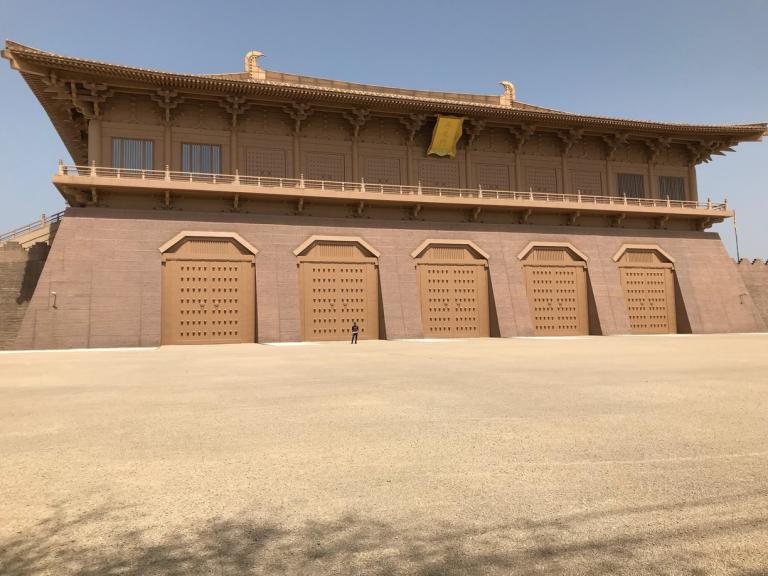
sites in Guanzhong area.Identical in form with the inscriptions on bonesor tortoise shells of the Shang Dynasty,they were also both found in the central plains area of northern China,with minor difference in the time of existence.Is this pure chance?Is there any possiblity that the inscriptions have roots in these symbols?Oracles,on all accounts,had developed into a mature character system and must had been evolved from a singular thing.
Yet,the exact meanings of these symbols can only be expounded by the Banpo people.
Banpo,as the representative site of the Yangshao Culture,is so brilliant for its extensiveness and profoundness.Because I had little time,I only had time to glance at the some of the remains,retracing the footsteps of the ancestors. Meaningful or less important, all of these footprints are the legacies left behind by our Mother. Though we are thousands of years and thousands of miles away from the Shangzhai people, coming here to worship, our footprints are somewhat linked with theirs…
